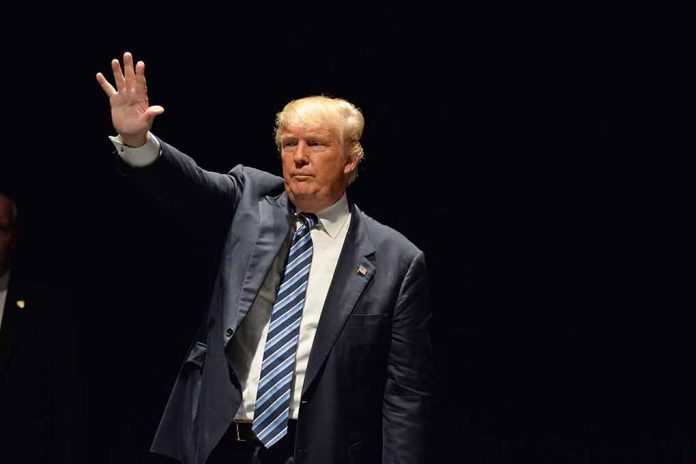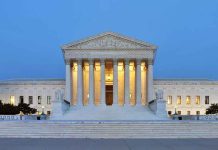
Donald Trump unveils a groundbreaking plan to dismantle the “left-wing censorship regime” and restore free speech rights in America, promising to shatter the current system.
At a Glance
- Trump announces a comprehensive policy initiative to combat censorship and protect free speech
- Plan includes executive orders, legal actions, and legislative proposals to target tech companies and federal agencies
- Proposed measures aim to prevent collusion between government and private entities in censoring lawful speech
- Trump frames the fight for free speech as crucial for America’s survival and Western Civilization
Trump’s Bold Vision for Free Speech Restoration
In a move that has sent shockwaves through the political landscape, former President Donald J. Trump has unveiled a sweeping plan to combat what he describes as rampant censorship and restore free speech rights in America. The announcement comes as part of his Agenda47 campaign, positioning free speech as a cornerstone issue for his second term in office.
Trump’s initiative takes aim at what he perceives as a coordinated effort by Deep State bureaucrats, Silicon Valley tech giants, left-wing activists, and corporate media to silence American voices. The former president’s plan is multifaceted, targeting both government agencies and private companies in an attempt to recalibrate the balance of power in favor of individual speech rights.
Executive Actions and Legislative Proposals
At the heart of Trump’s free speech agenda is a series of executive actions he promises to implement starting day !. These include signing an executive order to prevent federal agencies from colluding with private entities to censor lawful speech, a move aimed directly at the alleged coordination between government officials and social media platforms.
“If we don’t have FREE SPEECH, then we just don’t have a FREE COUNTRY.” – President Donald J. Trump
Trump’s plan also includes banning federal funds from being used to label domestic speech as misinformation or disinformation. This measure appears to be a direct response to concerns about government overreach in content moderation. Additionally, the former president has vowed to identify and fire federal bureaucrats involved in censorship activities, signaling a zero-tolerance approach to what he sees as unconstitutional suppression of free speech.
Targeting Big Tech and the “Censorship Industry”
A significant portion of Trump’s free speech initiative focuses on reining in the power of big tech companies. He proposes revising Section 230 of the Communications Decency Act to ensure digital platforms meet standards of neutrality and transparency. This move could fundamentally alter the legal protections that social media companies currently enjoy, potentially making them more accountable for content moderation decisions.
“That’s why today, I am announcing my plan to shatter the left-wing censorship regime, and to reclaim the right to Free Speech for all Americans.” – President Donald J. Trump
In a bold move, Trump has also declared his intention to break up what he terms the “censorship industry.” This includes stopping federal funding for non-profits and academic programs involved in what he perceives as censorship activities. The plan goes even further, proposing a 7-year cooling-off period for former intelligence officials before they can join companies with access to large amounts of U.S. user data, a measure seemingly designed to prevent the revolving door between government agencies and tech giants.
A Digital Bill of Rights
Perhaps the most forward-looking aspect of Trump’s free speech plan is the proposal for a digital Bill of Rights. This would include provisions for digital due process and establish clear user rights regarding content moderation. Such a measure could provide unprecedented protections for online speech and potentially reshape the digital landscape in favor of individual users.
“The fight for Free Speech is a matter of victory or death for America — and for the survival of Western Civilization itself.” – President Donald J. Trump
Trump’s framing of the free speech issue as crucial for America’s survival and Western Civilization underscores the gravity with which he views the current state of discourse in the country. By pledging to dismantle what he sees as a system of censorship, Trump is positioning himself as a champion of constitutional rights in the digital age, a stance that is likely to resonate strongly with his base and potentially attract new supporters concerned about online censorship.

















